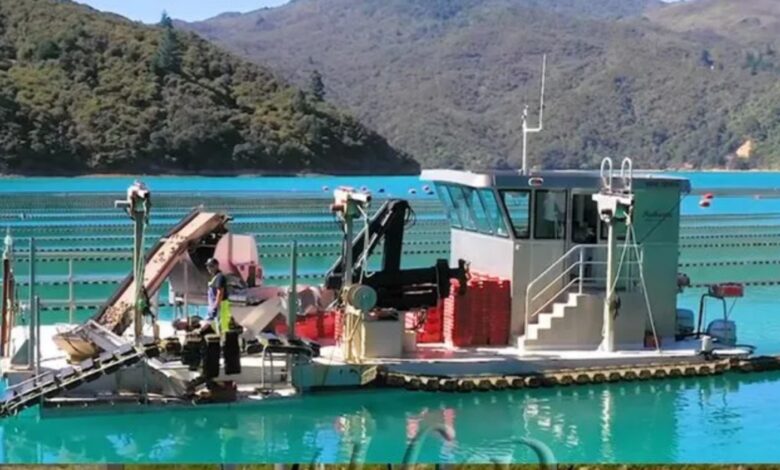How Oyster Baskets and Cages Improve Shellfish Harvesting

There’s something almost magical about the way oyster baskets and cages transform shellfish farming. What used to be a labor-intensive, unpredictable process has now become streamlined, efficient, and even eco-friendly—all thanks to these clever tools. Whether you’re a seasoned oyster farmer or just curious about how these delicious bivalves make it to your plate, understanding the role of oyster baskets and cages is key.
These simple yet brilliant contraptions do more than just hold oysters—they protect them, help them grow better, and make harvesting a breeze. No more lost shellfish to predators or murky waters. No more backbreaking work hauling up oysters one by one. With oyster basket and cages, farmers can maximize yield while minimizing effort.
The Basics: What Are Oyster Baskets and Cages?
Let’s start with the basics. An oyster basket is typically a lightweight, durable container made from materials like plastic or wire mesh, designed to hold oysters while allowing water to flow freely. They’re stackable, easy to handle, and perfect for small to medium-scale farming.
On the other hand, an oyster cage is a sturdier, often larger structure, sometimes made from heavy-duty materials like galvanized steel. These cages are built to withstand harsh conditions, making them ideal for open-water farming where waves and predators are a constant challenge.
Both serve the same essential purpose—keeping oysters safe and organized—but they do it in slightly different ways. The choice between an oyster basket and an oyster cage often comes down to the farming environment and the scale of production.
Why Oyster Baskets Make Farming Easier
If you’ve ever tried growing oysters without any containment system, you know the struggle. Oysters scatter, sink into the mud, or get eaten by crabs and starfish. That’s where the oyster basket shines.
First, it keeps everything in one place. Instead of searching through the seabed, farmers can simply lift a basket and have all their oysters right there. This is a game-changer for efficiency. Plus, because the baskets allow water to circulate, the oysters get consistent nutrients without suffocating in sediment.
Another big advantage? Protection. Oyster baskets act like a fortress against predators. Crabs and fish might try to sneak in, but the mesh design keeps them out while letting plankton—the oyster’s favorite snack—flow right through.
And let’s not forget about cleaning. Oysters in baskets are easier to maintain. Farmers can shake them to remove excess silt or algae, ensuring healthier, faster-growing shellfish.
Oyster Cages: Built for Tough Conditions
Now, if you’re farming in rougher waters—think strong currents or open ocean—oyster cages are the way to go. These heavy-duty structures are built to last, with reinforced frames that can handle waves, storms, and even curious sea creatures looking for a free meal.
One of the biggest perks of oyster cages is their scalability. They can hold hundreds, even thousands, of oysters at once. This makes them perfect for commercial operations where volume matters. And because they’re so sturdy, they can be left in the water for long periods without falling apart.
Cages also promote better growth. Since oysters inside are suspended in the water column, they’re exposed to more nutrients and oxygen than those sitting on the seafloor. This leads to plumper, healthier oysters in less time.
The Environmental Perks of Using Oyster Baskets and Cages
Beyond making life easier for farmers, oyster baskets and cages are great for the environment. Oysters are natural water filters—each one can clean up to 50 gallons of water a day! By keeping them contained, these tools help maximize their filtering power in targeted areas.
Additionally, because baskets and cages reduce the need for dredging (a destructive harvesting method), they help preserve seabed habitats. No more scraping up the ocean floor and disrupting marine life. Instead, farmers can simply lift their baskets or cages, harvest the oysters, and return the rest to the water with minimal disturbance.
Some farms even use oyster cages to rebuild reefs. By stacking them strategically, they create artificial habitats where wild oysters can settle and thrive. It’s a win-win for both aquaculture and conservation.
Choosing the Right System for Your Farm
So, how do you decide between an oyster basket and an oyster cage? It depends on your setup.
Smaller farms or those in calmer waters might prefer oyster baskets for their simplicity and ease of use. They’re lightweight, portable, and great for beginners. Plus, they’re usually more affordable, making them a smart choice for those just starting out.
Larger operations, especially in open water, will likely benefit from oyster cages. Their durability and capacity make them ideal for high-volume production. And while they might require a bigger upfront investment, their longevity pays off in the long run.
The Future of Oyster Farming
As demand for sustainable seafood grows, tools like oyster baskets and cages will only become more important. Innovations in materials and design are already making them even more efficient—think biodegradable baskets or solar-powered monitoring systems for cages.
Whether you’re a farmer, a seafood lover, or just someone who cares about the ocean, it’s clear that these humble tools are revolutionizing shellfish harvesting. So next time you enjoy a fresh oyster, remember—it might have spent its life safe and sound in an oyster basket or cage, growing plump and delicious until it reached your plate.
And really, isn’t that something to celebrate?



